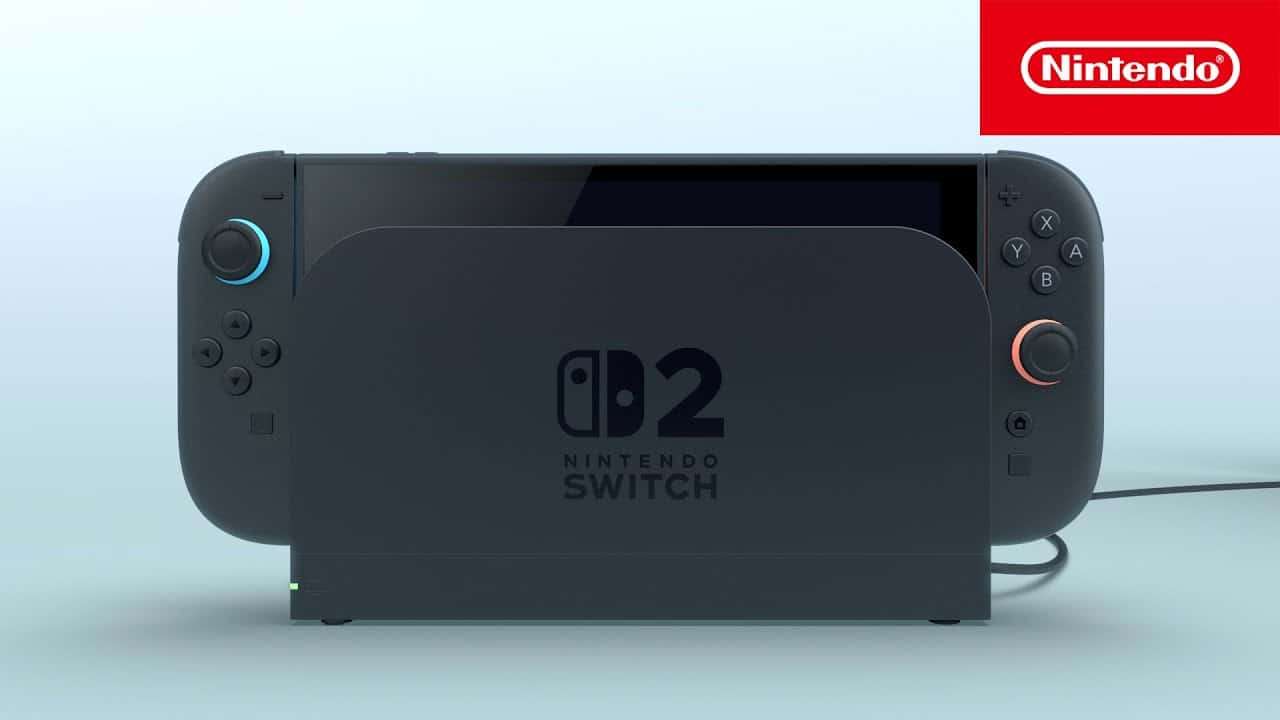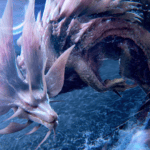Even with the highly anticipated Switch 2 officially on the horizon, Nintendo isn’t abandoning its current generation just yet. In fact, all signs point to continued first-party support for the original Nintendo Switch well into the late 2020s—potentially through 2027 or 2028. This strategy not only extends the life of one of Nintendo’s most successful consoles, but also reinforces the company’s commitment to its existing player base.
Extended First-Party Support Confirmed Into 2025 and Beyond
During a February 2025 financial call, Nintendo President Shuntaro Furukawa reiterated that first-party support for the original Switch will continue “as long as there is demand.” Internally, Nintendo has first-party titles lined up through at least 2025, with some insider reports suggesting key software releases could stretch into 2026. However, hardware support—including firmware updates, eShop access, and limited new releases—could persist for several years beyond that.
This is a familiar strategy for Nintendo. When the 3DS launched in 2011, Nintendo continued supporting the aging DS for years afterward, with major game releases well into 2013 and support lingering until 2014-2015. The Wii U, despite a much smaller user base, also saw gradual wind-downs over a multi-year period.
Switch 2 Is Coming, But Backward Compatibility Is Key

Nintendo has confirmed that its next-generation console—unofficially dubbed the Switch 2—will launch in June 2025. Crucially, it is expected to offer backward compatibility with most existing Switch games. This decision dramatically softens the transition between generations, allowing developers and players to straddle both consoles without needing to start from scratch.
Backward compatibility also enables Nintendo to continue selling cross-generation titles, much like Sony and Microsoft did with the PlayStation 4/5 and Xbox One/Series X transitions. Flagship games like the next Mario Kart or Donkey Kong could launch on both platforms, ensuring wide reach without forcing immediate upgrades.
Why Support Might Last Through 2027–2028
Here’s why Nintendo’s support could extend into the latter half of the decade:
| Factor | Impact |
|---|---|
| Install Base | Over 139 million units sold globally, making it Nintendo’s best-selling console ever. |
| Ongoing Game Sales | Switch software continues to top charts, even outperforming next-gen titles in some regions. |
| Family Appeal | The Switch remains a top choice for families and casual gamers, demographics slower to upgrade. |
| Economic Trends | Global inflation and rising hardware costs make consumers less likely to upgrade quickly. |
| Third-Party Support | Developers like Capcom, Square Enix, and Ubisoft are still launching games on the Switch in 2025. |
Based on these factors, it’s plausible that some first-party content and almost certainly eShop, online multiplayer, and software updates will remain active into 2027 or even 2028.
A Smart Transition Strategy
For Nintendo, this isn’t just about sentimentality or nostalgia—it’s good business. Maintaining Switch support ensures that late adopters and budget-conscious gamers don’t feel alienated. It also enables Nintendo to continue monetizing a massive user base while gradually introducing the Switch 2 without splintering its audience.
With the Switch entering its eighth year in 2025, this extended support makes it one of the longest-lasting consoles in modern gaming history—and it’s still going strong. Whether you’re a longtime fan or a new owner, the message is clear: Nintendo’s not done with the Switch just yet.
Key Takeaways
- Nintendo is expected to continue first-party software support through 2025-2026, with overall support extending to 2027-2028.
- The company’s official statements confirm ongoing support for the original Switch even after the Switch 2 launches.
- This extended support timeline benefits the large existing user base and follows Nintendo’s historical approach to console transitions.
Strategic Vision for Nintendo Switch Support
Nintendo’s approach to supporting the original Switch showcases a careful balance between nurturing existing hardware and introducing new technology. The company has consistently demonstrated its commitment to extending console lifecycles while maintaining a strong user base.
Longevity of the Original Switch
Nintendo’s president Shuntaro Furukawa has officially confirmed that the company will continue supporting the original Switch even after the Switch 2 launches. This isn’t just empty corporate talk – it aligns with Nintendo’s financial projections and market strategy.
Industry analysts from Ampere predict Nintendo will maintain significant support through at least 2027, when the Switch ecosystem is expected to still command 49% market share – the company’s highest since the Wii era.
The strategy makes financial sense. With over 100 million Switch units sold, abandoning this massive install base would leave billions in potential revenue untapped.
Analysis of Nintendo’s Historical Support Patterns
Nintendo has established consistent patterns with previous console transitions. The company typically provides first-party support for 2-3 years after a successor launches.
The 3DS received games like Metroid: Samus Returns and Pokémon Ultra Sun/Moon years after the Switch debuted. Similarly, the Wii saw releases well into the Wii U era.
Third-party developers tend to support legacy Nintendo platforms even longer. As one search result notes, “third parties aren’t going to give up the massive Switch 1 audience any time soon.”
This dual-platform approach benefits Nintendo financially while giving consumers flexibility in when they upgrade to new hardware.
Comparative Analysis of Console Lifecycles
Console lifecycles have evolved significantly over time, with Nintendo showing a pattern of extended support compared to competitors. Market positioning and company philosophy play key roles in determining how long first-party games continue for aging hardware.
Nintendo Switch vs. Sony PlayStation Cycle
The Nintendo Switch has already demonstrated unusual longevity. Launched in 2017, the Switch will be entering its eighth year in 2025 with continued strong support from Nintendo. This extended lifecycle significantly outpaces the typical 6-7 year console generation.
Sony, in contrast, tends to follow a more predictable pattern. The PlayStation 4 saw its primary support window last about seven years before the PS5 took center stage. When Sony releases new hardware, their first-party development typically shifts focus more quickly.
Nintendo’s approach differs fundamentally. The company historically provides overlap periods where both old and new hardware receive significant attention. The 3DS, for example, continued receiving major titles for years after the Switch launched.
Market Trends Influencing Console Support
Several factors explain Nintendo’s extended support strategy. The Switch’s massive install base – over 140 million units – creates a financial incentive to continue developing for the platform even after a successor launches.
Nintendo’s games also tend to be less technically demanding than Sony’s showcase titles. This allows their development teams to create compelling experiences on older hardware while still producing games that satisfy their audience.
The gaming industry has also shifted toward longer hardware cycles overall. Digital stores, subscription services, and backward compatibility have extended the commercial viability of older platforms.
Market analysts now project the Switch will continue receiving first-party support through at least 2027-2028, which would make it among the longest-supported home consoles in gaming history.
Technical Considerations for Sustained Support
The original Nintendo Switch features specific hardware and software architectures that impact Nintendo’s ability to maintain support over an extended period. These technical elements both enable and constrain how the company can manage the platform’s longevity.
Hardware Capabilities and Constraints
The Switch’s custom Nvidia Tegra X1 chipset has proven remarkably adaptable despite being relatively modest by today’s standards. This ARM-based architecture allows Nintendo to continue optimizing performance through software updates rather than requiring hardware revisions.
Battery life remains a key constraint for the original model, which offers 2.5-6.5 hours compared to the improved 4.5-9 hours in the 2019 revision. This limitation might affect how developers approach new games targeting both old and new Switch hardware.
The modular Joy-Con design provides flexibility for gameplay experiences that remain relevant even as technology advances. The dock-and-play concept continues to differentiate the Switch from competitors, making continued support technically feasible.
Memory constraints (4GB RAM) may eventually limit what developers can accomplish, especially as games grow more complex.
Software and OS Updates for the Switch
Nintendo has maintained a consistent update schedule for the Switch OS, focusing on stability and security rather than major feature overhauls. This conservative approach helps extend the viability of older hardware.
The company’s lightweight OS architecture requires minimal system resources, leaving more processing power available for games. This efficiency helps older Switch models remain capable of running newer software.
Nintendo’s history of backward compatibility suggests they’ll design future OS updates to maintain functionality with the original Switch library. Key features like cloud saves and Nintendo Switch Online provide services that can bridge between hardware generations.
Recent firmware updates have focused on quality-of-life improvements rather than resource-intensive features, indicating Nintendo’s commitment to supporting the original hardware configuration.
Factors That Will Influence When Support for the Switch Ends
While Nintendo hasn’t confirmed an exact end date for supporting the original Switch, several key factors are shaping how long the console will remain in active service:
- Switch 2 Launch Timing: The Nintendo Switch 2 is scheduled for release on June 5, 2025, signaling a shift in focus. But Nintendo historically supports older consoles for years after new hardware launches—such as the 3DS coexisting with the DS and the original Wii lasting well beyond the Wii U’s release.
- Massive Install Base: As of December 31, 2024, the Switch had shipped 150.86 million units worldwide, making it Nintendo’s second best-selling console of all time, just behind the DS (154.02 million). That huge user base gives Nintendo every reason to extend its lifespan.
- Ongoing Software Plans: Nintendo President Shuntaro Furukawa confirmed that software development for the Switch is ongoing through at least March 31, 2025. Some analysts expect first-party support to trickle into 2026, especially via remasters, ports, or smaller franchise entries.
- Third-Party Support: Even after Nintendo begins to pivot, third-party studios often continue developing for successful platforms. Studios like Ubisoft, Square Enix, and Capcom have active Switch projects expected well into 2026 and possibly beyond.
- eShop and Online Services: Based on past trends, infrastructure like the Nintendo eShop and Switch Online services will likely remain operational for several years, even after new games slow down.
Estimated Timeline for Switch 1 Phase-Out
| Year | What to Expect |
|---|---|
| 2025–2026 | Gradual transition period. Some first-party games may still release on both Switch consoles. Focus shifts to Switch 2. |
| 2027–2028 | First-party support likely dwindles or stops. Third-party developers may continue support. The Switch 1 may remain on store shelves as a budget model. |
| Beyond 2028 | New games become rare. Online services like the eShop may remain available, but development for Switch 1 mostly ends. |
What’s New With the Switch 2
Nintendo’s next-generation console introduces meaningful upgrades that will encourage some players to transition faster—but not all. Here’s what’s confirmed:
- Launch Date: June 5, 2025
- Price: $449.99 USD, or $499.99 for a Mario Kart World bundle
- Display: 7.9″ 1080p LCD with 120Hz refresh rate
- Storage: 256GB internal
- Controllers: Joy-Con 2 with magnetic attachment and mouse-like precision
- Dock: Supports 4K and HDR
- Audio: Spatial 3D sound and improved clarity
- Online: GameChat with optional video (camera accessory sold separately)
- Accessibility: Adjustable fonts, screen reader, speech-to-text
- Backward Compatibility: Most original Switch games will run, though titles requiring unique Joy-Con features (like Ring Fit Adventure or Nintendo Labo) may have limited functionality.
Additional Insights: How Past Generations Compare
- 3DS vs DS: After the 3DS launched in 2011, the original DS continued receiving major first-party games until 2013, and smaller releases continued into 2014. Sales persisted into 2020.
- Wii U vs Switch: Due to lower sales, the Wii U’s lifespan was short. First-party support stopped not long after the Switch arrived in 2017.
- Switch 1’s Advantage: Unlike the Wii U, the original Switch has a massive audience and strong software momentum, which almost guarantees a longer tail of support—likely extending years beyond the Switch 2’s debut.
Why This Matters for Consumers
For gamers not ready to upgrade, the Switch 1 remains a great investment. Continued support, lower pricing, and cross-generation titles mean that you won’t be left behind immediately after the next-gen console arrives. Expect Nintendo to treat this transition carefully, leveraging its biggest hardware success story to reach both new and loyal fans alike.
Frequently Asked Questions
Nintendo’s support plan for the Switch family of consoles remains a topic of interest for gamers. Many fans wonder about the longevity of the original Switch, its variants, and potential future console plans.
How long will Nintendo continue to support the original Switch with new first-party game releases?
Based on current information, Nintendo is expected to support the original Switch with first-party games through at least 2025-2026. Some industry analysts suggest support might extend into 2027.
Nintendo’s president Shuntaro Furukawa has stated the company will continue supporting the original Switch “as long as there is consumer demand.” This flexible approach means support could last longer than initially expected.
The consistent sales performance of the Switch, even in its later lifecycle years, provides Nintendo with incentive to continue developing games for the platform.
Will the Nintendo Switch OLED model receive the same first-party support duration as the original console?
The Nintendo Switch OLED model is expected to receive identical first-party support as the original Switch. Both consoles run the same games and share the same internal architecture.
Nintendo typically treats hardware revisions of the same console generation equally in terms of software support. This pattern was established with previous console families.
The OLED model’s newer release date doesn’t necessarily mean it will receive support beyond the original Switch’s lifecycle.
What is the anticipated end-of-life timeline for the Nintendo Switch Lite in terms of first-party support?
The Nintendo Switch Lite will likely follow the same support timeline as other Switch models. First-party support is expected to continue through at least 2025-2026.
As a dedicated handheld variant of the Switch, the Lite may remain appealing to certain demographics even after the potential release of a successor console.
Nintendo has historically supported handheld systems for extended periods, sometimes even after successor consoles launch.
As of 2025, is it still advisable to purchase a Nintendo Switch considering the console’s age?
Purchasing a Switch in 2025 can still be worthwhile for many consumers. The console has an extensive library of over 4,000 games spanning various genres.
The potential for price drops on the original model could make it an even more attractive purchase. Reports suggest Nintendo may reduce the price to boost sales further.
The extended support window means buyers can expect new games for at least 1-2 more years, with third-party and indie support likely continuing beyond that timeframe.
Has Nintendo given any official indication regarding a discontinuation date for the original Switch?
Nintendo has not announced any official discontinuation date for the original Switch. The company typically avoids making such announcements far in advance.
Shuntaro Furukawa’s statement about supporting the Switch “as long as there is consumer demand” suggests Nintendo is taking a market-driven approach rather than adhering to a fixed timeline.
Historical patterns indicate Nintendo may gradually phase out production rather than abruptly ending support.
Are there any confirmed details about a successor to the Nintendo Switch, such as a ‘Switch 2’?
As of April 2025, Nintendo has not officially confirmed specific details about a Switch successor. Industry speculation suggests development is underway.
Analysts predict a potential announcement could come in late 2025 with a possible release in 2026, though this remains speculative.
Nintendo typically introduces new console generations while maintaining support for previous hardware for a transitional period, suggesting overlap between Switch support and its successor’s launch.







